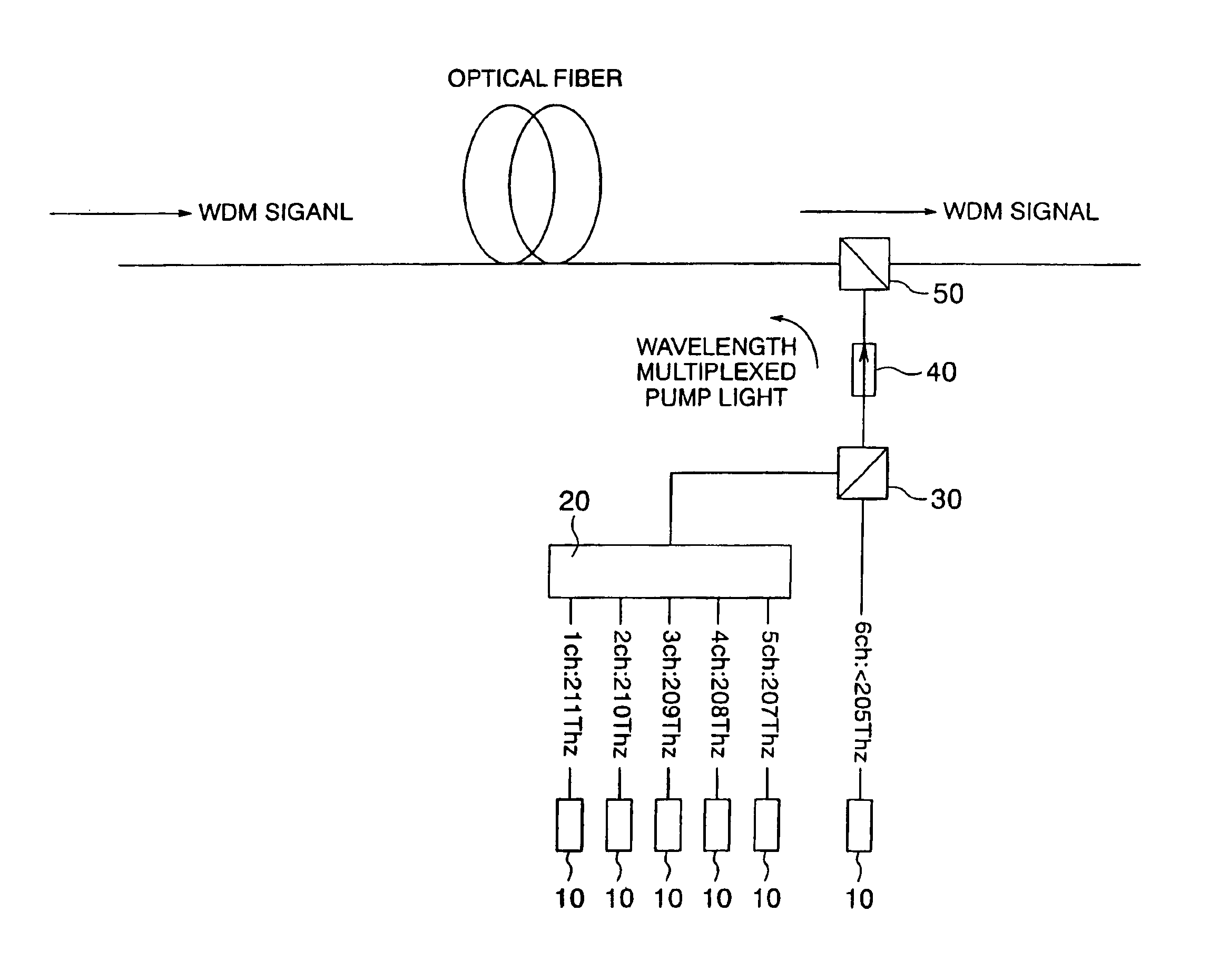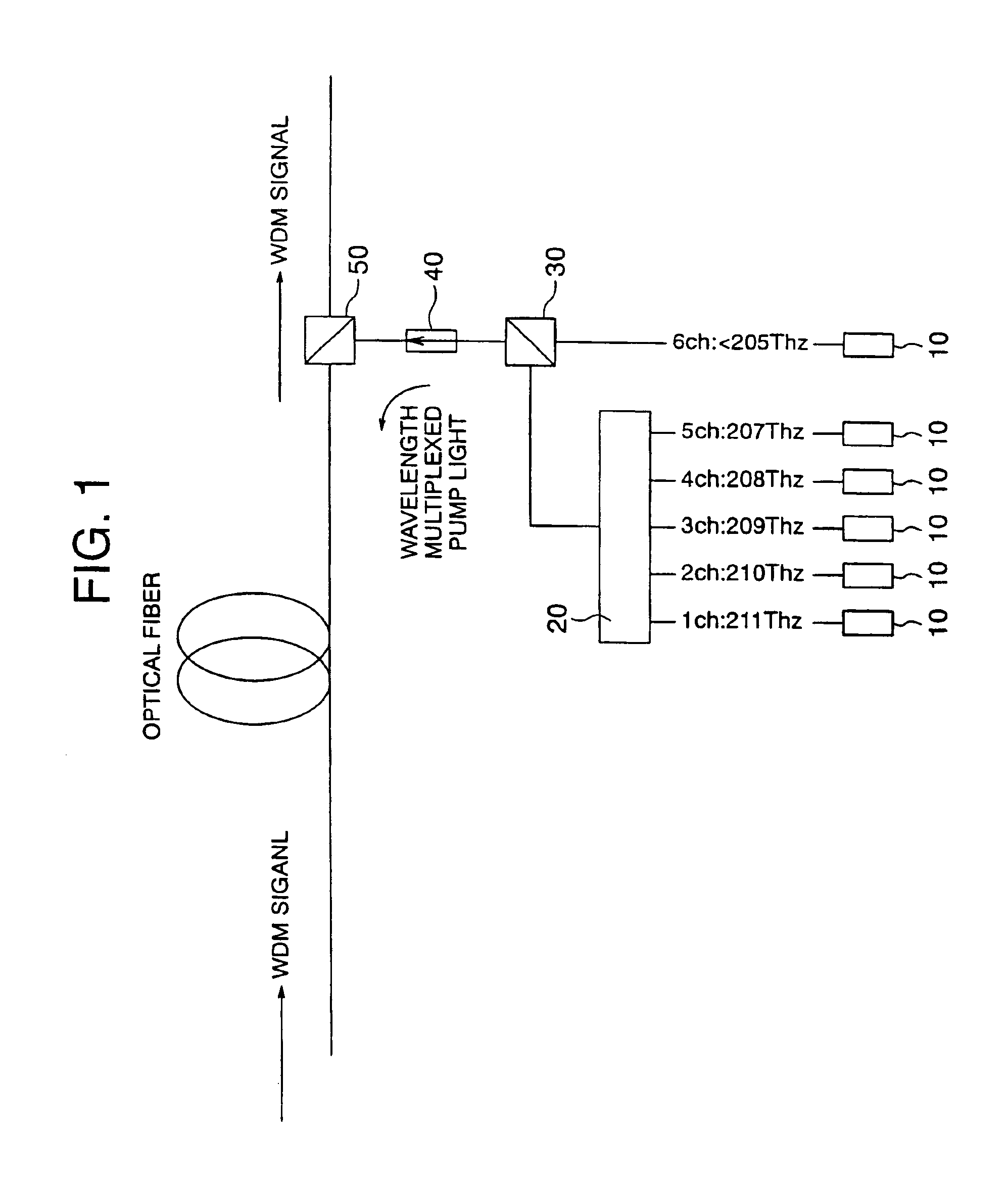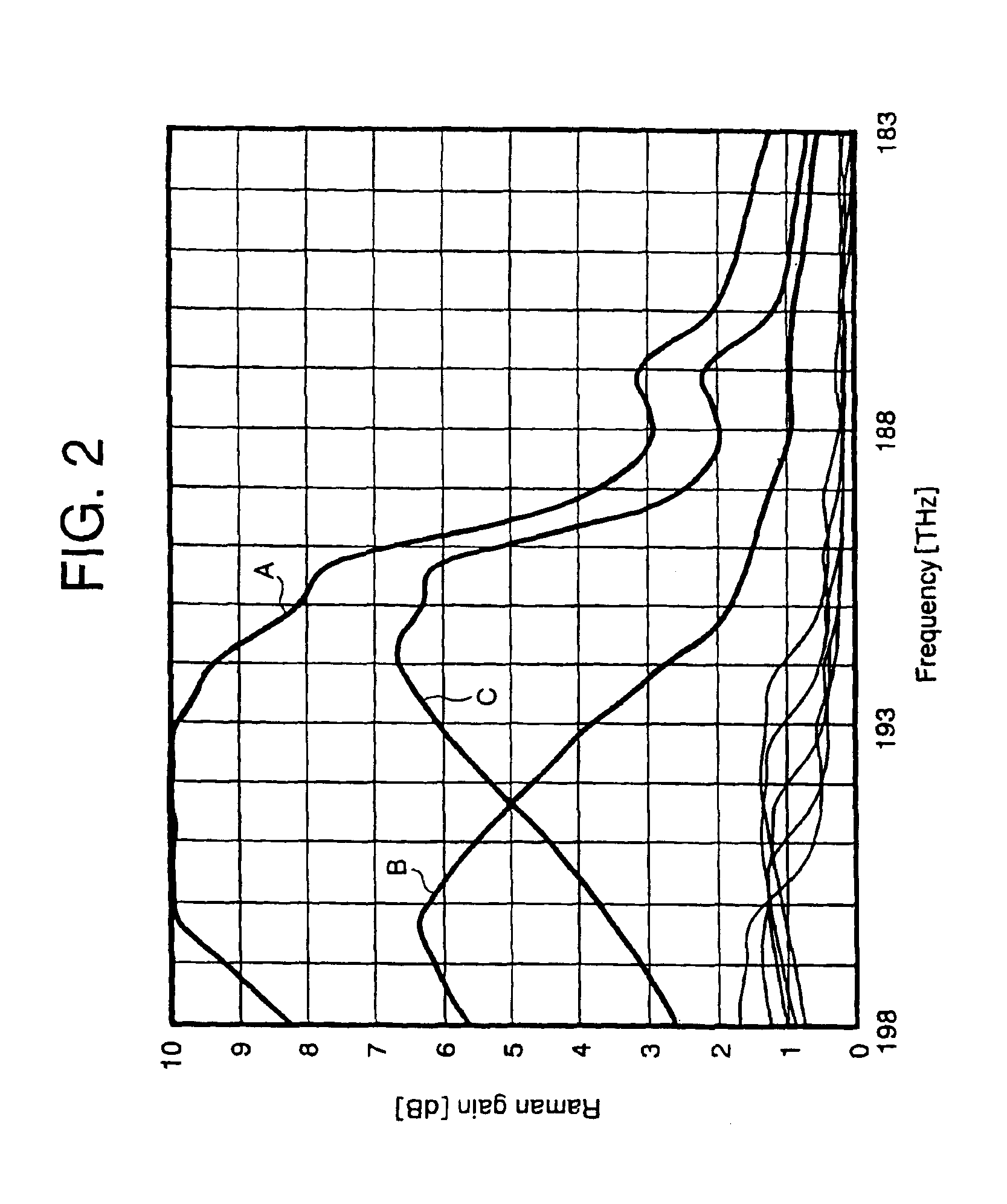Raman amplifier
a technology of amplifier and amplifier, applied in the field of optical amplifier, can solve the problems of not being able to suppress gain deviation below 1 db regarding the operating band width of 30 nm, and the achievement of higher speed is approaching to its limit, and achieves the effect of worsening the gain flatness
- Summary
- Abstract
- Description
- Claims
- Application Information
AI Technical Summary
Benefits of technology
Problems solved by technology
Method used
Image
Examples
example 1
[0086]Now, the Raman amplifier according to the present invention will be explained in connection with an example that the band is expanded to C+L band by combining the C band and the L band. FIG. 17 shows an example that the pump light has two wavelengths before expansion, and there are pumping wavelengths before and after expansion, as shown in the following Table 6. By selecting one of pumping wavelengths added for the expansion to 1439 nm, at least one of the pump lights added for the expansion is located within the band of the pump lights (1426 nm to 1453 nm) before expansion. Due to the presence of such pump light, the expansion can be realized while maintaining the gain flatness.
[0087]
TABLE 6Pumpingwavelength [nm]After expansionBefore expansionAddition1426∘∘1439∘∘1453∘∘1464∘∘1493∘∘
[0088]FIG. 18 shows an example that the pump light has three wavelengths before expansion, and there are pumping wavelengths before and after expansion, as shown in the following Table 7. By selecti...
example 2
[0092]This example 2 shows an example that the pump light has two wavelenghts before expansion and the wavelength of the pump light before expansion is greater than that in the example 1. In this example, the gain band for the C band is designed to be 1535 nm to 1570 nm. The pumping wavelenghts before and after expansion are as shown in the Table 9. By selecting one of pumping wavelengths added for the expansion to 1444 nm, at least one the pump lights added for the expansion is located within the band of the pump lights (1430 nm to 1457 nm) before expansion. Due to the presence of such pump light, the expansion can be realized while maintaining the gain flatness.
[0093]
TABLE 9Pumpingwavelength [nm]After expansionBefore expansionAddition1430∘∘1444∘∘1457∘∘1464∘∘1493∘∘
example 3
[0094]This example 3 shows an example that the pump light has two wavelengths before expansion and the wavelength of the pump light before expansion is smaller than that in the example 1. In this example, the gain band of the C band is designed to be 1525 nm to 1560 nm. The pumping wavelengths before and after expansion are as shown in the following Table 10. By selecting one of pumping wavelengths added for the expansion to 1438 nm, at least one of the pump lights added for the expansion is located within the band of the pump lights (1422 nm to 1450 nm) before expansion. Due to the presence of such pump light, the expansion can be realized while maintaining the gain flatness.
[0095]
TABLE 10Pumpingwavelength [nm]After expansionBefore expansionAddition1422∘∘1438∘∘1450∘∘1464∘∘1493∘∘
PUM
 Login to View More
Login to View More Abstract
Description
Claims
Application Information
 Login to View More
Login to View More - R&D
- Intellectual Property
- Life Sciences
- Materials
- Tech Scout
- Unparalleled Data Quality
- Higher Quality Content
- 60% Fewer Hallucinations
Browse by: Latest US Patents, China's latest patents, Technical Efficacy Thesaurus, Application Domain, Technology Topic, Popular Technical Reports.
© 2025 PatSnap. All rights reserved.Legal|Privacy policy|Modern Slavery Act Transparency Statement|Sitemap|About US| Contact US: help@patsnap.com



